You searched for: 大乐透胆拖玩法3胆8拖【TG飞机:@bapingseo】吉布提谷歌引流【TG电报:@bapingseo】微信推广链接制作软件【Telegram:@bapingseo】ag论坛网pg游戏麻将胡了大奖?j5GhMe/903308.html
<< Previous | Displaying results 551-575 of 763 for "大乐透胆拖玩法3胆8拖【TG飞机:@bapingseo】吉布提谷歌引流【TG电报:@bapingseo】微信推广链接制作软件【Telegram:@bapingseo】ag论坛网pg游戏麻将胡了大奖?j5GhMe/903308.html" | Next >>
-
SS and Police
ArticleDuring World War II, SS and police leaders played a key role in the mass murder of Europe’s Jews. Learn how Himmler combined the SS and police to create a radical weapon for the Nazi regime.

-
The Boycott of Jewish Businesses
ArticleThe "Jewish boycott" ("Judenboykott") of April 1, 1933, was the first coordinated action undertaken by the Nazi regime against Germany’s Jews. Learn more.
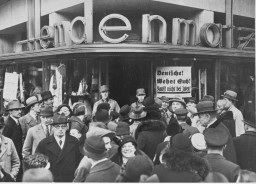
-
Adolf Hitler: Key Dates
ArticleLearn about some key dates in the life of Adolf Hitler, one of Europe's most ruthless dictators, who led the Nazis from 1921 and Germany from 1933-45.

-
War Refugee Board: Activities
ArticleThe War Refugee Board was a significant US attempt to rescue and relieve Jews and other endangered people under German occupation. Learn about its activities.

-
Rudolf (Rezső) Kasztner
ArticleLearn more about Rudolf (Rezső) Kasztner (1906-1957) during World War II and his controversial efforts to help refugees escape Hungary in 1944.

-
Grafeneck T4 Facility
ArticleThe Grafeneck T4 Center was the first centralized killing center to be established by German authorities within the context of the Nazi “euthanasia,” or T4, program.
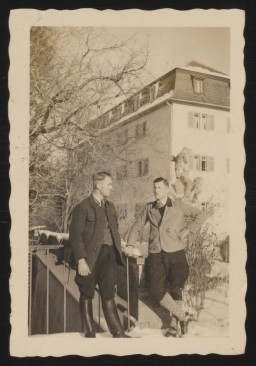
-
Subsequent Nuremberg Proceedings, Case #9, The Einsatzgruppen Case
ArticleThe Einsatzgruppen Case was Case #9 of 12 Subsequent Nuremberg Proceedings against leading German industrialists, military figures, SS perpetrators, and others.
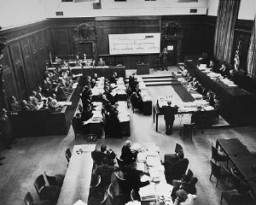
-
Warsaw Ghetto Uprising
ArticleThe Warsaw ghetto uprising was the largest, symbolically most important Jewish uprising, and first urban uprising in German-occupied Europe.
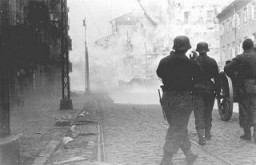
-
David Bayer
ArticleDavid Bayer lived in Kozienice, Poland. Explore his biography and learn about his experiences during World War II and the Holocaust.

-
Warsaw
ArticleIn October 1940, Nazi authorities established the Warsaw ghetto. Learn more about life in the ghetto, deportations, armed resistance, and liberation.

-
An Overview of the Holocaust: Topics to Teach
ArticleRecommended resources, topics, context, rationale, and critical thinking questions if you have limited time to teach about the Holocaust.

-
Simone Weil
ID CardSimone was the oldest of two children born to a Jewish family in the small village of Ringendorf. When she was 3 her family moved to Strasbourg. Her father made his living breeding sheep. Simone and her younger brother were both active in a Jewish scouting organization, Les Eclaireurs Israelites de France (EIF). Simone attended a public secondary school in Strasbourg. 1933-39: In addition to attending secondary school for five days of the week, Simone also went to a Jewish religious school on the other…

-
Welek Luksenburg
ID CardWelek grew up in Dabrowa Gornicza, an industrial town in western Poland. His father, Simcha, was a wholesale meat merchant and his mother, Rozalia, served as president of the local chapter of the Women's International Zionist Organization. Welek's older brother, Szlomo, was a dentist. The Luksenburgs were among the several thousand Jews who lived in Dabrowa Gornicza. 1933–39: Like many other children in the town, Welek attended public school. Because his family was very religious, he did not attend…

-
Milica Popovic Kuhn
ID CardMilica was the fourth of nine children born to Serbian Orthodox landowners in the Croatian part of Yugoslavia. In 1922 Milica married Milan Kuhn, a Catholic Serb, in a Serbian Orthodox ceremony, and the couple moved to the Macedonian part of Yugoslavia, where Milan was working on hydroelectric projects. In 1932 the couple returned with their young daughter to live in northern Yugoslavia. 1933-39: The Kuhns lived in the city of Zrenjanin in the Vojvodina region where Milan worked as a hydroengineer…
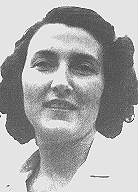
-
Judith Kalman
ID CardJudith was the only child born to a Jewish couple who lived in Hatvan, a small town 36 miles northeast of Budapest. Judith's father worked in his brother's business, marketing grains and other agricultural products purchased from local farms. When she was 3, Judith gave her first public recitation of poetry, an interest that she pursued throughout her childhood. 1933-39: Judith's family wasn't religious--they were Hungarians who happened to be Jewish, and their family was well-liked in Hatvan. But in the…

-
Pawel Zenon Wos
ID CardPawel was the oldest of four children born to Roman Catholic parents in Poland's capital of Warsaw. Pawel's father had worked for the Polish merchant marine before starting his own textile business in 1930. The family moved to a comfortable apartment near the Royal Castle and the Vistula River. Pawel excelled in sports, including basketball and tennis. His favorite sport was rowing. 1933-39: In May 1939 Pawel became an army reserve officer and went to training camp near Augustow. On the morning of…

-
Walther Hamann
ID CardWalther was born in the state of Thuringia in east central Germany. Though his parents were Lutheran, Walther became a Jehovah's Witness in 1923. After becoming a master baker and confectioner in 1924, Walther worked in various coffeehouses in Plauen, Magdeburg and Duesseldorf. In 1928 he graduated from a professional school. He married and had two sons. 1933-39: In 1933 Walther became a pastry-making manager at the Cafe Weitz on Duesseldorf's Koenigsallee. The Gestapo arrested him at the cafe in 1937…

-
Selma Wijnberg
ID CardSelma was the youngest of the Wijnberg's four children, and the only daughter. When she was 7, her family left Groningen to start a business in the town of Zwolle [in the Netherlands]. There her parents ran a small hotel popular with Jewish businessmen traveling in the area. Every Friday there was a cattle market, and many of the cattle dealers came to the Wijnberg's hotel for coffee and business. 1933-39: At home Selma and her family were observant of Jewish tradition because her mother was religious.…
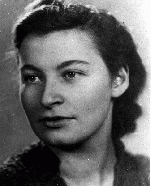
-
Zigmond Adler
ID CardZigmond's parents were Czechoslovakian Jews who had emigrated to Belgium. His mother, Rivka, was a shirtmaker. She had come to Belgium as a young woman to find a steady job, following her older brother, Jermie, who had moved his family to Liege several years earlier. In Liege, Rivka met and married Otto Adler, a businessman. The couple looked forward to raising a family. 1933-39: Zigmond was born to the Adlers in 1936, but his mother died one year later. His father remarried, but the marriage didn't last.…

-
Henoch Kornfeld
ID CardHenoch's religious Jewish parents married in 1937. His father, Moishe Kornfeld, and his mother, Liba Saleschutz, had settled in Kolbuszowa, where Henoch's mother was raised. There, Liba's father bought the newlyweds a home and started his new son-in-law in the wholesale textile business. 1938-39: Henoch was born in late 1938, and was raised among many aunts, uncles and cousins. Around Henoch's first birthday, Germany invaded Poland and soon reached Kolbuszowa. Polish soldiers on horses tried to fight…
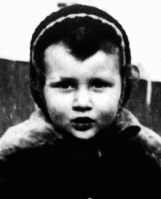
-
Smiljka Ljoljic Visnjevac
ID CardSmiljka was one of three daughters born to Serbian Orthodox parents in the town of Mostar in the central Yugoslav region of Herzegovina. Smiljka's mother died when Smiljka was 3, and the three girls were raised by their father. A tomboy in her youth, at 17 Smiljka won the Miss Makarska Riviera beauty pageant and left for Germany to become a fashion model. 1933-39: Smiljka had a successful modeling career in Berlin. With her tall, slim figure, high cheekbones, and almond-shaped, grey-blue eyes, she was…
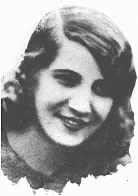
-
Claude J. Letulle
ID CardOne of five children, Claude grew up in a Catholic family in Paris. His father, a physician, owned a prosperous general medicine practice and medical laboratory. Claude's father encouraged him to study medicine and to join his practice, but Claude was more interested in becoming a lawyer. 1933-39: Claude continued his studies, and in 1936 he entered the university to study law. By mid-1939, Germany's threat against France had escalated, and on September 3, 1939, France declared war on Germany. Claude knew…
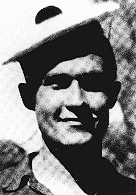
-
Ben Stern
ID CardBen was born to Jewish parents in Warsaw. When Ben was 7, his family moved to Mogielnica, about 40 miles from Warsaw. Ben's father spent much of his time studying religious texts. His wife managed the family liquor store. Ben attended public school during the day and was tutored in religious studies in the evening. 1933-39: After attending school in Warsaw, Ben returned home to help in the family's liquor store. One day, there was a mass demonstration in town. People chanted, "Don't buy from the Jews!"…
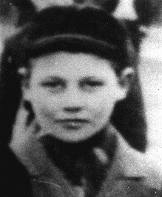
-
Isadore Frenkiel
ID CardIsadore and his wife, Sossia, had seven sons. The Frenkiels, a religious Jewish family, lived in a one-room apartment in a town near Warsaw called Gabin. Like most Jewish families in Gabin, they lived in the town's center, near the synagogue. Isadore was a self-employed cap maker, selling his caps at the town's weekly market. He also fashioned caps for the police and military. 1933-39: Isadore felt the pinch of the Depression, but although business was poor, he was able to provide for his family. Shortly…

-
Sossia Frenkiel
ID CardSossia and her husband, Isadore, were the parents of seven boys. The Frenkiels, a religious Jewish family, lived in a one-room apartment in a town near Warsaw called Gabin. Like most Jewish families in Gabin, they lived near the synagogue. Sossia cared for the children while Isadore worked as a self-employed cap maker, selling his caps at the town's weekly market. 1933-39: Because of the Depression, Isadore's business had fallen off, but the Frenkiels managed to continue providing for their family.…

